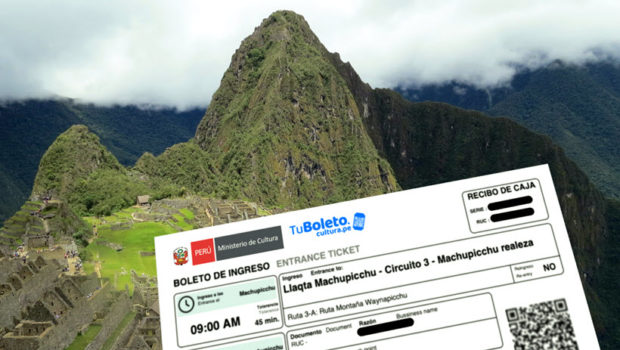
Machu Picchu New Rules in 2025
UPDATE: Machu Picchu has a new visitor management system with updated capacity limits and entry requirements for 2025.
Machu Picchu tourist circuits were reorganized on June 1. There are still the same three main circuits, but now each with multiple sub-routes, totaling 10 different options with color-coded signs to mark the paths.
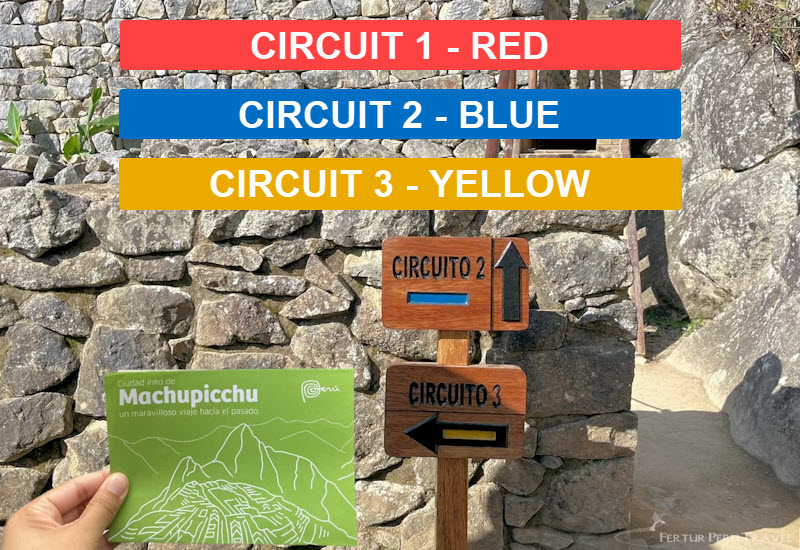
- Circuit 1: Panoramic Circuit (Red)
- Circuit 2: Inca City Circuit (Blue)
- Circuit 3: Royalty Circuit (Yellow)
- Machu Picchu Ticket Prices 2025
- Machu Picchu Rules in Brief
- What ID or documentation must I bring to enter Machu Picchu
- How long can I stay in Machu Picchu?
- When can I go in Machu Picchu?
- Machu Picchu Points of Interest:
- Inca Trail hikers' access to Machu Picchu
- How crowded is Machu Picchu?
- Visitor Capacity Limits
- How many people visit Machu Picchu annually?
- Do changes have any effect on the best season to visit Machu Picchu?
- New Machu Picchu Routes: Inkaraqay & Eastern Terraces
Important Machu Picchu Circuit Details:
- Visitors must choose their preferred route when purchasing tickets.
- Each circuit has different prices and time slots.
- Some routes, particularly those including mountain hikes, are only available during the high season (June 1 to October 15).
- The color-coding (Red, Blue, Yellow) is used on-site for easier navigation.
Circuit 1: Panoramic Circuit (Red)
This circuit offers panoramic views but doesn’t include access to the lower shrines and terraces.
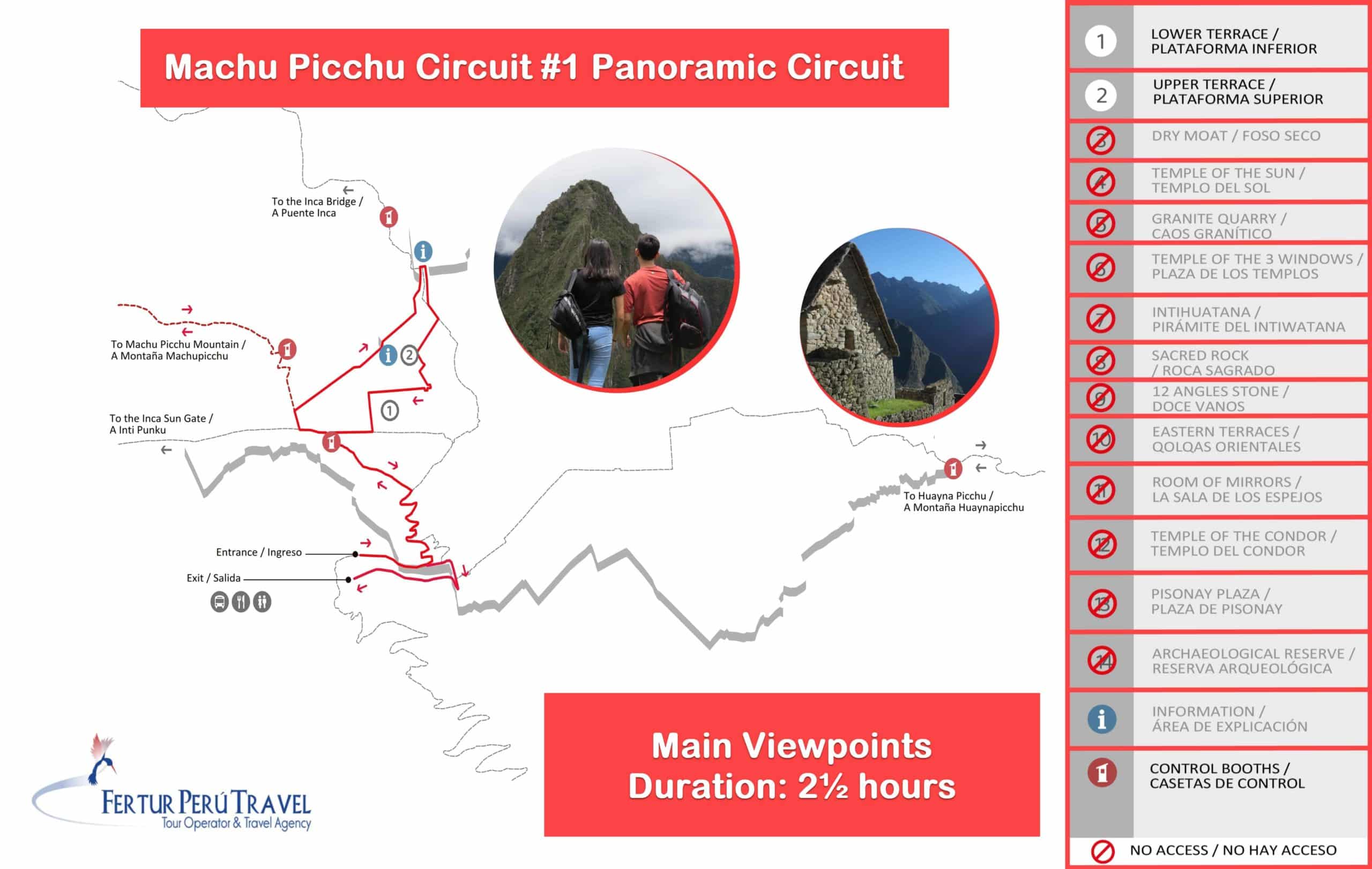
- Route 1-A: Upper Terrace + Machu Picchu Mountain (Duration: 4-6 hours)
- Includes: Lower platform, Upper platform, Machu Picchu Mountain
- Route 1-B: Upper Terrace (only main viewpoint) (Duration: 2.5 hours)
- Route 1-C*: Upper Terrace + Intipunku (Sun Gate) (Duration: 3 hours)
- Includes: Visit to Tambo and Pachamama
- (*high season only)
- Route 1-D*: Upper Terrace + Inca Bridge (Duration: 2 hours)
- Includes: View of the Vilcanota Valley
- (*high season only)
Circuit 2: Inca City Circuit (Blue)
This circuit offers the classic view of Machu Picchu and access to the main archaeological points of interest.
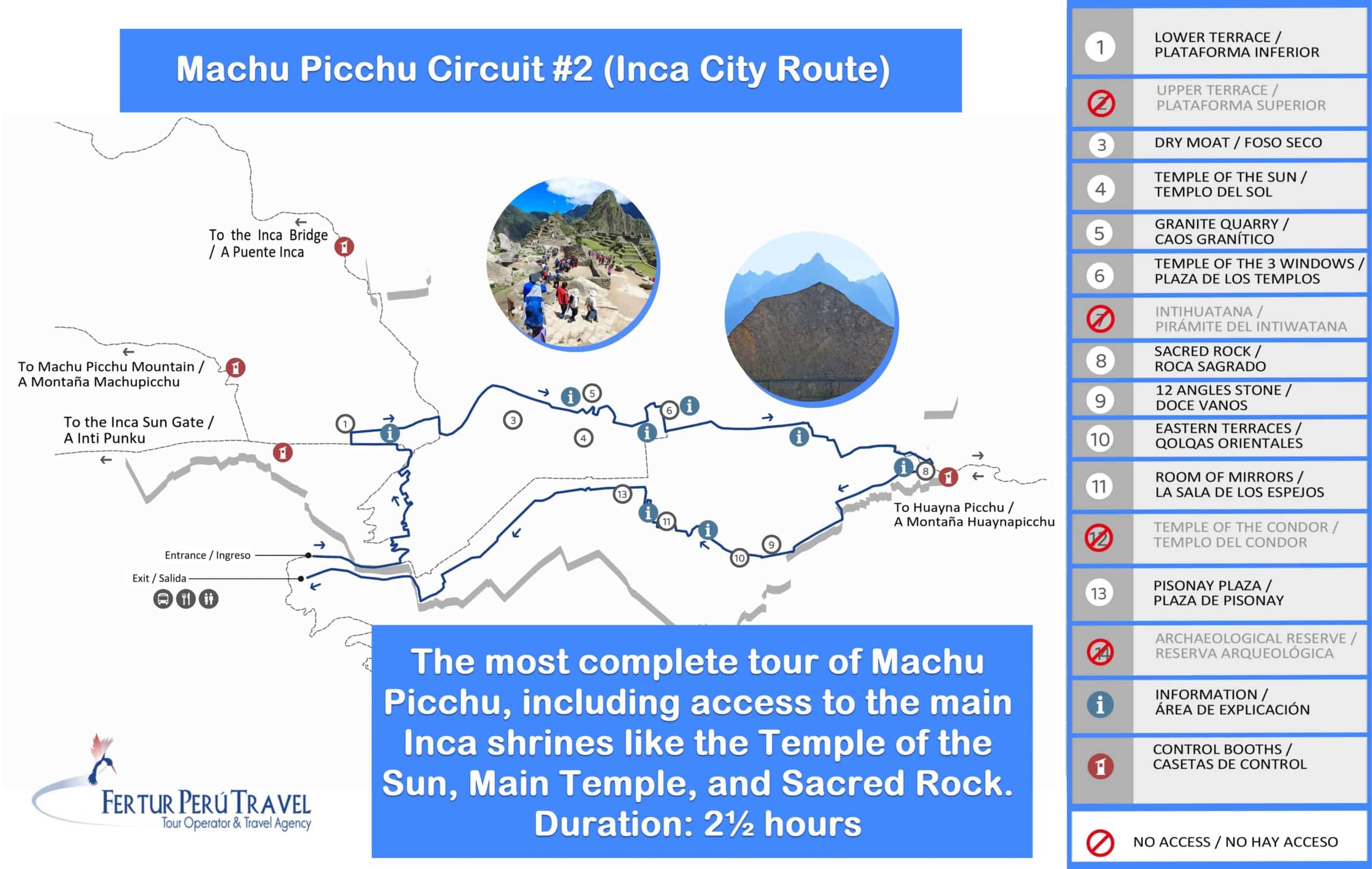
- Route 2-A: Designed Route (Classic) (Duration: 2.5 hours)
- Includes: Main viewpoint, Granite Quarry, Temple Plaza, Sacred Rock, Twelve-Angle Stone, Eastern Terraces, Water Mirrors Complex, Pisonay Plaza
- Route 2-B: Lower Terrace Route (Classic) (Duration: 2.5 hours)
- Includes: Temple of the Sun viewpoint, Temple Plaza, Sacred Rock, Twelve-Angle Stone, Eastern Terraces, Water Mirrors Complex, Pisonay Plaza
Note: The Intihuatana is temporarily closed to tourists for preservation maintenance.
Circuit 3: Royalty Circuit (Yellow)
This circuit focuses on the lower part of Machu Picchu and includes additional hiking options.
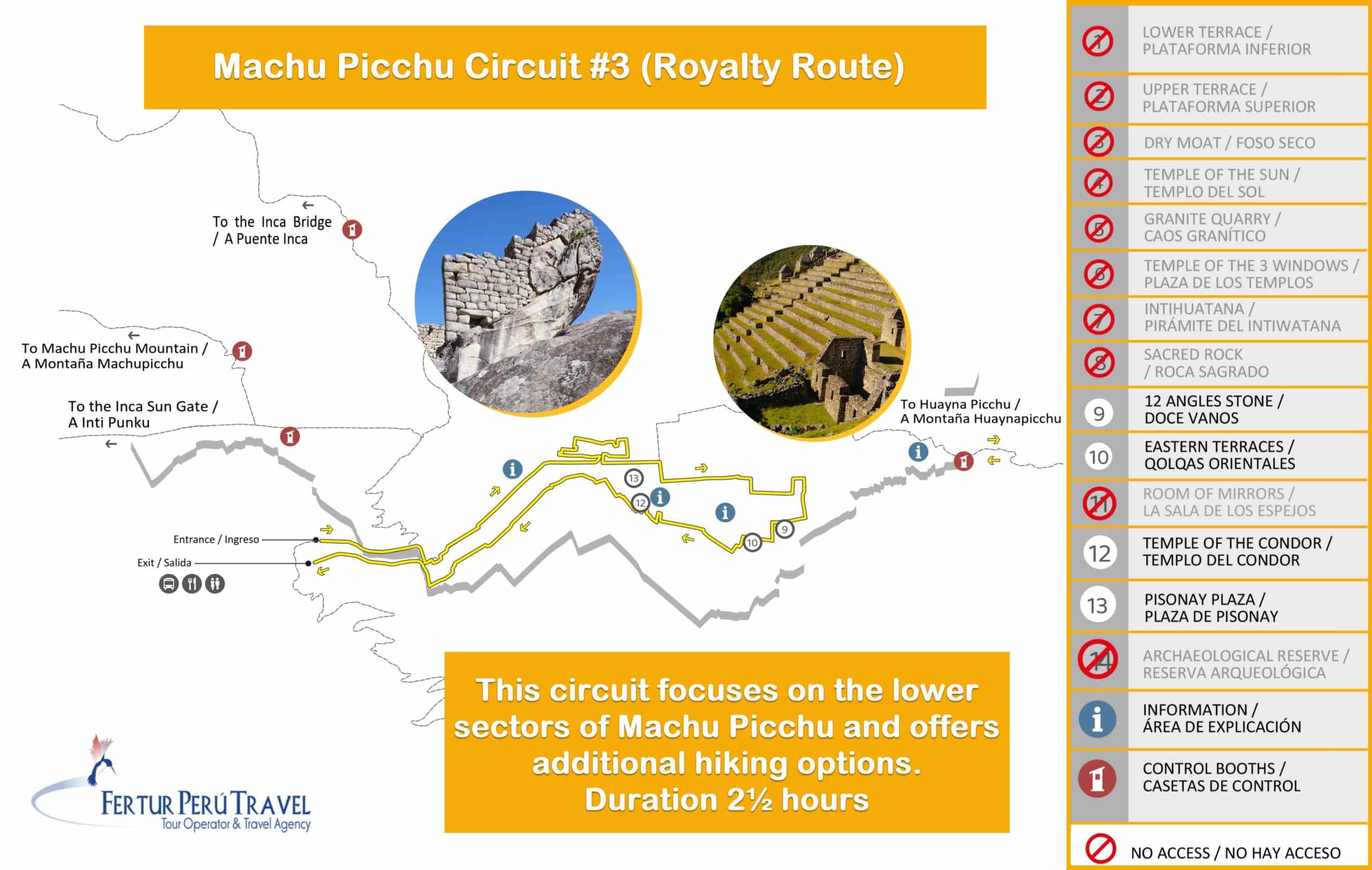
- Route 3-A: Archaeological Center + Huayna Picchu Mountain (additional 3 hours for mountain)
- Route 3-B: Archaeological Center (Designed Route) (Duration: 2.5 hours)
- Route 3-C*: Archaeological Center + Temple of the Moon (Great Cavern) (Duration: 4 hours)
- (*high season only)
- Route 3-D*: Archaeological Center + Huchuy Picchu (Duration: 3.5 hours)
- (*high season only)
All Route 3 options include: Sacred Rock, Twelve-Angle Stone, Eastern Qolqas, Temple of the Condor, Pisonay Plaza
Machu Picchu Ticket Prices 2025
General Admission (Circuits 1, 2 or 3):
- Adults: $40 USD (S/ 152.00)
- University Students: $20 USD (S/ 77.00)
- Children (3-17 years): $18 USD (S/ 70.00)
It is important to note that these rates are for Foreign Tourists. Peruvian citizens and legal residents have special discounted rates. Additionally, children under 3 years old have free entrance, while children from 3 years old and above need to pay for their entrance ticket.
The prices may vary slightly depending on the specific circuit and route chosen. It’s recommended to book tickets in advance, especially for popular options like Huayna Picchu, which has limited daily spots available
Circuit 1: Panoramic Circuit
- Route 1-A (Upper Terrace + Machu Picchu Mountain): Ӣ Adults: $53 USD (S/ 200.00) Ӣ University Students: $33 USD (S/ 125.00) Ӣ Children (3-17 years): $31 USD (S/ 118.00)
- Routes 1-B, 1-C, and 1-D: Same as General Admission
Circuit 2: Inca City Circuit
- All Routes: Same as General Admission
Circuit 3: Royalty Circuit
- Route 3-A (Archaeological Center + Huayna Picchu Mountain): Ӣ Adults: $53 USD (S/ 200.00) Ӣ University Students: $33 USD (S/ 125.00) Ӣ Children (3-17 years): $31 USD (S/ 118.00)
- Route 3-B: Same as General Admission
- Route 3-C (Archaeological Center + Temple of the Moon): Ӣ Adults: $53 USD (S/ 200.00) Ӣ University Students: $33 USD (S/ 125.00) Ӣ Children (3-17 years): $31 USD (S/ 118.00)
- Route 3-D (Archaeological Center + Huchuy Picchu): Same as General Admission
Additional Information:
- Prices are listed in both USD and Peruvian Soles (S/).
- University student prices apply to undergraduate students only.
- Routes 1-C, 1-D, and 3-C are only available during high season.
- The Inca Bridge option can be added to Circuit 1 or 2 at no additional cost.
Machu Picchu Rules in Brief
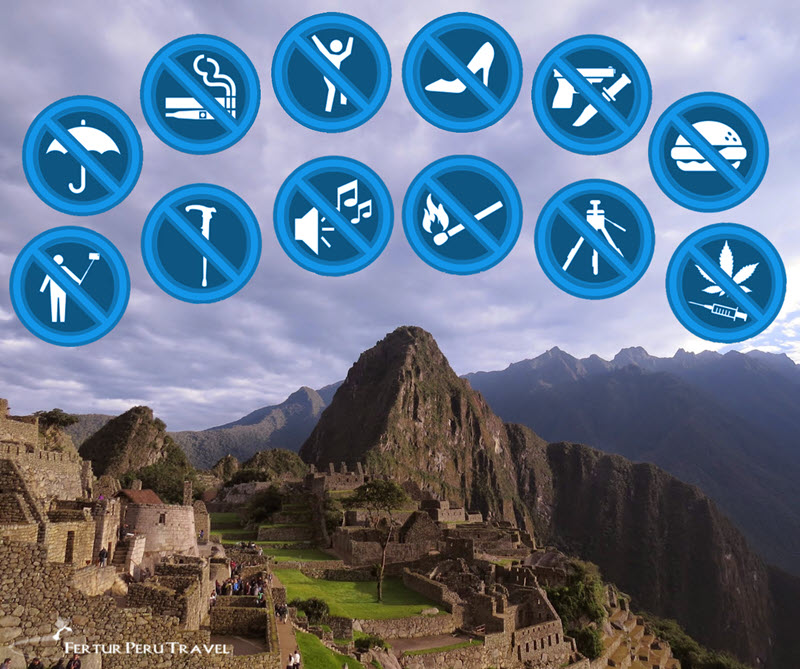
The actual Official list of Machu Picchu Regulations is lengthy, but here are the basics:
- Do not lean on or climb the walls or megalithic structures
- No Drones
- No Umbrellas
- No smoking or vaping
- Do not hop, jump, dance or cause a disturbance
- No heels or hard-sole shoes
- No weapons
- No illicit drugs
- No food or drink (Water is allowed, but not in disposable plastic bottles)
- No Selfie Sticks or Tripods
- No trekking poles with metallic or hard tips (Canes and poles are allowed for use by elderly people or people with obvious physical handicaps, and in general as long as they have rubber tips)
- No music
For a comprehensive listing of Machu Picchu Rules click HERE
“Machu Picchu rules 2025, four-hour time limit… seriously?” Yes. To preserve one of the Wonders of the World and ensure a quality experience for visitors from every corner of the globe, Peru’s Ministry of Tourism and External Commerce (Mincetur) on January 1, 2019, implemented new rules at Machu Picchu.
What ID or documentation must I bring to enter Machu Picchu
You absolutely MUST bring your passport and the information must correspond to the personal information on your entry ticket. You’ll have to present your valid University or College photo ID if you have purchased the discounted Student Entry Ticket. (Note: This discount is only available to undergraduate students under 25 years of age who have a valid student ID card issued by the university or college.)
How long can I stay in Machu Picchu?
Machu Picchu rules dictate that tourists will be strictly limited to four hour stays. Most visitors really don’t spend more than four hours exploring the archaeological site, on average, anyway. Officials need to exercise more control over the amount foot traffic at any given time to preserve the Inca sanctuary.
When can I go in Machu Picchu?
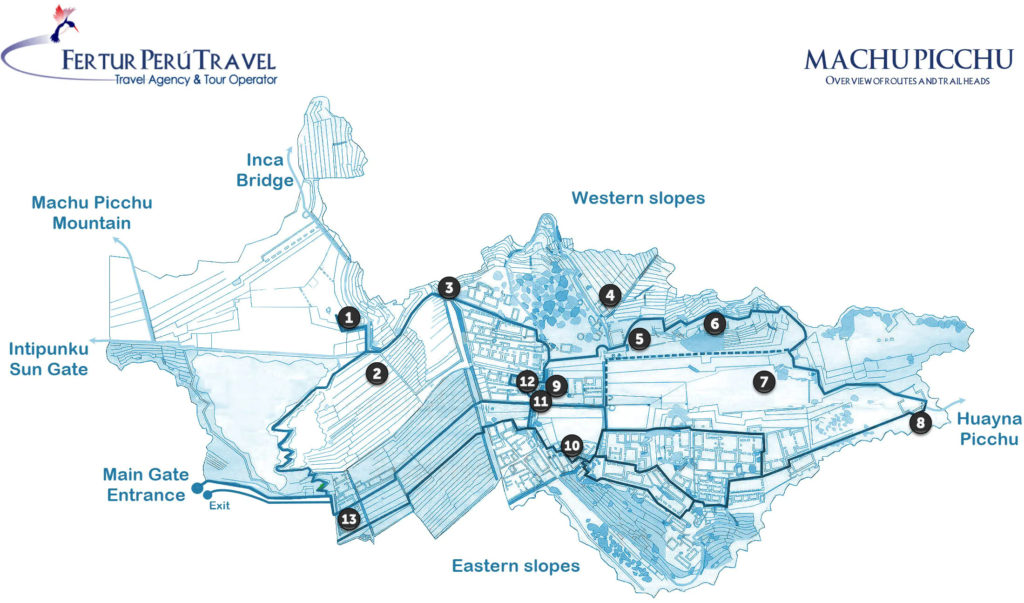
Machu Picchu Points of Interest:
- Guardhouse
- Agricultural Zone
- Main Gate
- West Agricultural Zone
- Temple of the Three Windows
- Intihuatana
- Main Plaza
- Sacred Rock
- Royal Enclosures
- Temple of the Condor
- Fountains
- Tower
- “Qollca” Storage Houses
The new regulations mandate three daily shifts: one in the early morning (6 am to 9 am), one in the late morning (9 am to 12 pm), and one in the early afternoon (12 pm to 3 pm). Within these three shifts, tourists must sign up to enter at a certain hour (7 am, 1 pm, etc). This helps not only to regulate the number of visitors in the Inca Sanctuary at any given time, but also to standardize the schedule to minimize wait times outside the ruins and ensure social distancing.
Besides choosing an entry time when you buy your general entry ticket, you must also decide on which of the three established circuits you will take through the sanctuary.
Inca Trail hikers’ access to Machu Picchu
Since June 16, 2022, trekkers who enter Machu Picchu from the Inca Trail through the Inti Punku (Sun Gate) have not had access to the upper terraces or shrines of the citadel. They are limited to the lower terraces and shrines included in Route 3. Also, for hikers of the longer Classic Inca Trail, once they exit the sanctuary, they cannot re-enter. Hikers of the Short Inca Trail, starting at KM 104, may re-enter Machu Picchu the following day. For all Inca Trail trekkers who want to return to Machu Picchu and explore the most interesting shrines of the upper portion of Machu Picchu must purchase the additional entry ticket.
How crowded is Machu Picchu?
Starting in 2025, the absolute daily cap of people per day will increase to 4,500, and up to 5,600 per day for certain “high season” periods.
Visitor Capacity Limits
- Regular season: 4,500 visitors per day
- High season peak dates: Up to 5,600 visitors per day
- Special dates include:
- January 1
- April 17-20
- June 19 – November 2
- December 30-31
- Special dates include:
The maximum carrying capacity of Machu Picchu is established annually through a ministerial resolution, based on a technical report from the Decentralized Directorate of Culture of Cusco.
How many people visit Machu Picchu annually?
Between 2012 and 2019, Machu Picchu received more than 1 million visitors every year.
The prolonged closure of Machu Picchu during 2020 and drastic restrictions on international travel during the pandemic have had some profound impacts.
On October 28, 2022, Peru’s government repealed the State of Emergency, lifting all COVID-19 restrictions that had been in effect for 2 years, 7 months and 12 days.
However, last year political protests followed by chaotic changes to the ticket sales system at Machu Picchu contributed to lower numbers of tourists to the sanctuary.
A total of 955,741 visitors toured Machu Picchu in 2023.
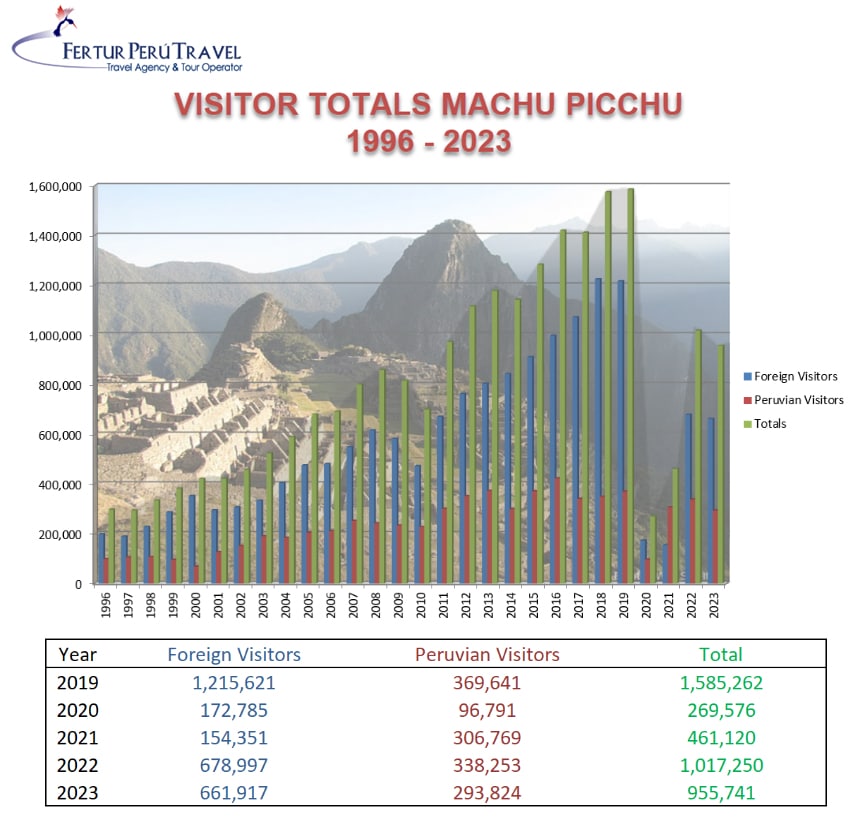
You might also like : Machu Picchu Guide 2025: Everything You Need To Know
Do changes have any effect on the best season to visit Machu Picchu?
Weather-wise, June through August is the optimal time to go, with April, May, September and October as a close second. November through January is wetter but for most visitors it’s still an amazing experience. February is often so rainy that it’s permanently designated as the month the Inca Trail to Machu Picchu is closed for maintenance.
The objective of spreading visitors out at Machu Picchu to improve everyone’s experiences loomed large long before the pandemic caused a dramatic decrease in visitor totals.
Before Covid-19, plans were taking shape to incentivize Peruvian visitors to explore some of Peru’s other numerous attractions during peak season to make way for foreign visitors. Development of those alternative sections is back on track.
New Machu Picchu Routes: Inkaraqay & Eastern Terraces
Two additional access routes into Machu Picchu are in the works to help disperse visitors over the full expanse of the Machu Picchu national park.
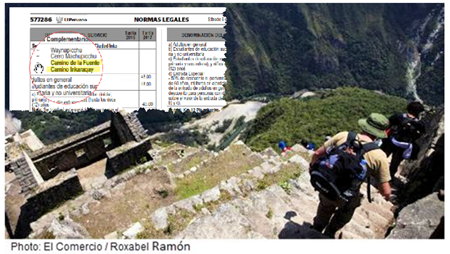
The first would offer a challenging high-adrenaline adventure trek through the Inca temple ruins of Inkaraqay, on the nearly vertical northeastern slope of Huayna Picchu.
The trek would begin by crossing the Vilcanota River at Km. 117 to begin an arduous journey of approximately five to six hours, not including time spent exploring the ruins atop Huayna Picchu. The trek would wend round the iconic peak to the Temple of the Moon and culminate in the Machu Picchu citadel, entering the sanctuary at the Sacred Rock.
The other new option is a gentler trail. It would start several hundred meters from Puente Ruinas, near the Mandor Gardens, before a short, but steep, ascent up to and through the Andenes Orientales (Eastern Terraces).
Similar to the stairs that bisect the switchback Hiram Bingham road to the current main entrance, this alternative route would take between 90 minutes and two hours to reach the citadel. It leads into the Machu Picchu citadel at the Temple of the Condor.
It remains to be seen what measures the Ministry of Culture might dust off and implement to diversify the number of touristic offerings around the site.
Study and debate will probably resume about the possible installation of a cable car from Aguas Calientes, an option already opposed by UNESCO. The preferred alternative would be a rail car system starting near the Mandor Waterfall, behind the horseshoe bend of the Vilcanota River, out of sight from the citadel above.
“Visiting Machu Picchu is a wonderful experience. Entrance to the Inca City is by shifts. Verify on the upper left-hand corner of your ticket your entrance time and board the bus according to this time. In this way you will avoid unnecessary lines and help to keep the order of which you will be the prime beneficiary. All together we can make this journey unforgettable.”
~ Ministerio de Cultura Cusco
Are you ready experience Machu Picchu? Let us know in the comments or fill out our contact form to inquire about a Cusco vacation tailored to your specifications and budget.
Check out Fertur’s Peru Travel Packages Special Offers.
Or browse more alternatives and contact us to customize your trip for a perfect Peru holiday!
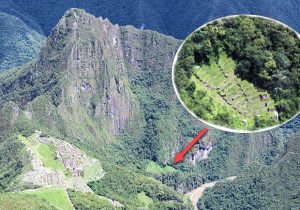
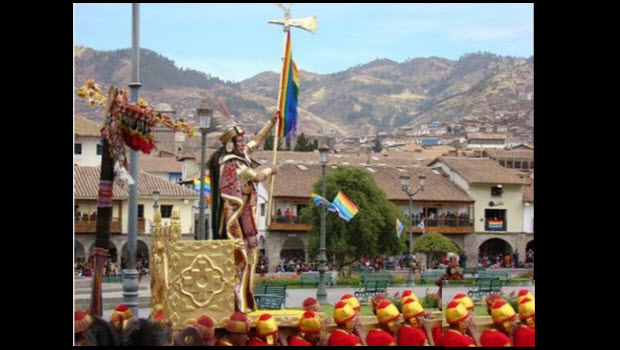 Book your Cusco trip featuring the Inti Raymi Festival
Book your Cusco trip featuring the Inti Raymi Festival 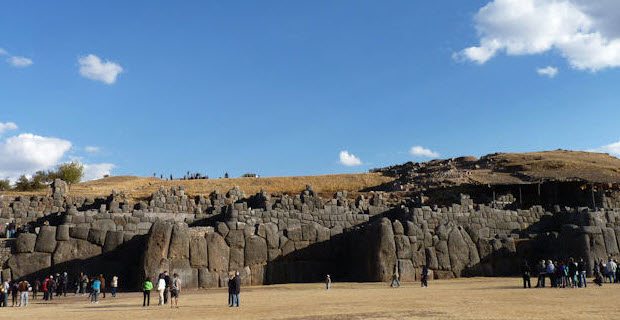 The virtual reality of Inca architecture: Sacsayhuaman
The virtual reality of Inca architecture: Sacsayhuaman 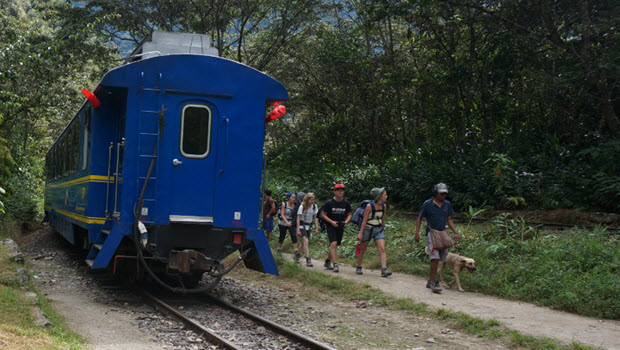 Regulating the back door entrance to Machu Picchu
Regulating the back door entrance to Machu Picchu 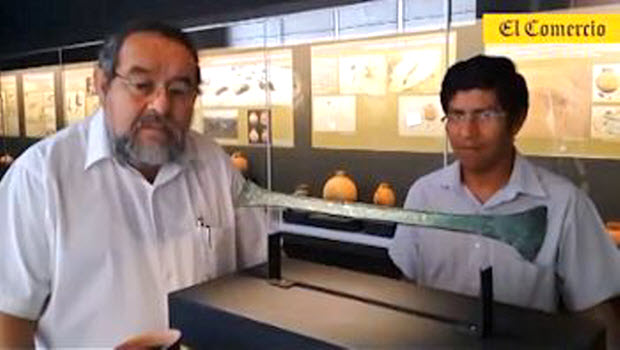 Free exhibit of ancient artifacts from El Chorro tombs
Free exhibit of ancient artifacts from El Chorro tombs 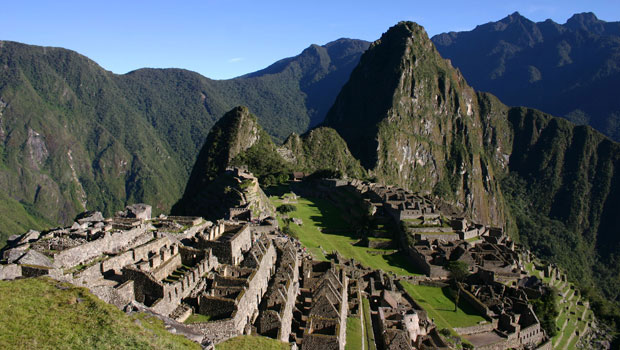 Mandatory tour guides and fixed routes coming soon for Machu Picchu
Mandatory tour guides and fixed routes coming soon for Machu Picchu 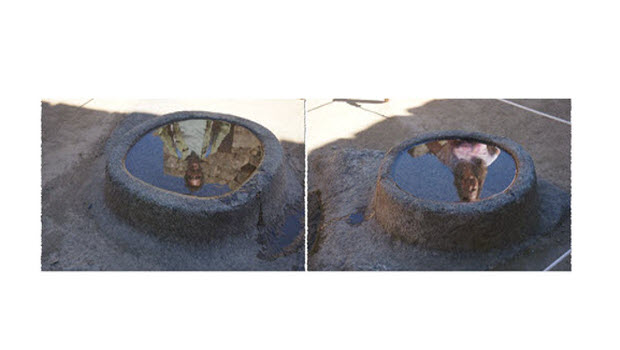 See yourself in the star mirrors of Machu Picchu
See yourself in the star mirrors of Machu Picchu 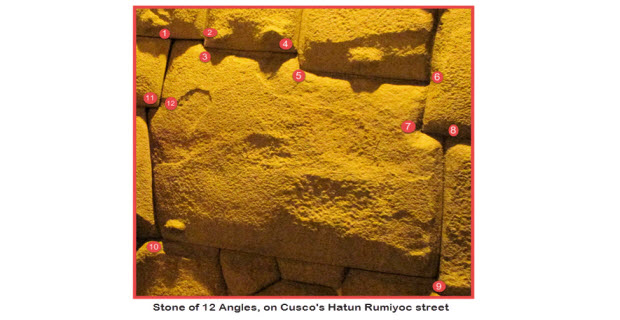 Famous 12 angle Inca stone topped but not overshadowed by 13 angle stone
Famous 12 angle Inca stone topped but not overshadowed by 13 angle stone 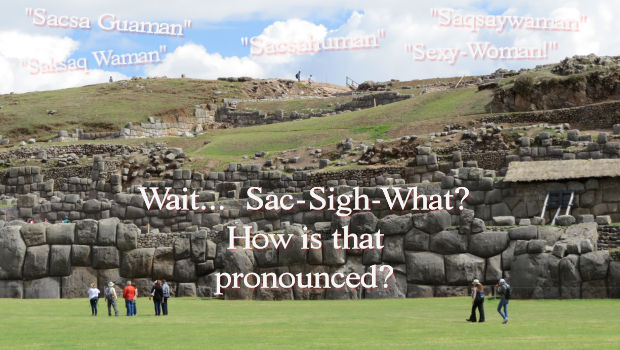 How to pronounce the name of that awesome ruins above Cusco
How to pronounce the name of that awesome ruins above Cusco
Yup, definitely a lot of changes taking place in regards to Machu Picchu. The three new times are meant to help disperse the number of visitors that are given entrance. Should help with some of the flow.
Have you heard about the new ban on plastic bottles in Machu Picchu or the new cable car that Peru gave permission to be built to Machu Picchu?
We sure have heard about the single-use plastics ban for Machu Picchu and more than 70 other protected areas in Peru. We think it’s great!
The proposed cable car system, being pushed by the municipality of Aguas Calientes (AKA: Machu Picchu Pueblo) and CONSETTUR is another matter.
Thankfully, Peru has definitely not given permission for such a project. The alternative, a funicular and elevator system that would start near the Mandor Falls further down the bend of the Urubamba River is what UNESCO and Peruvian authorities — both regional and national — favor.